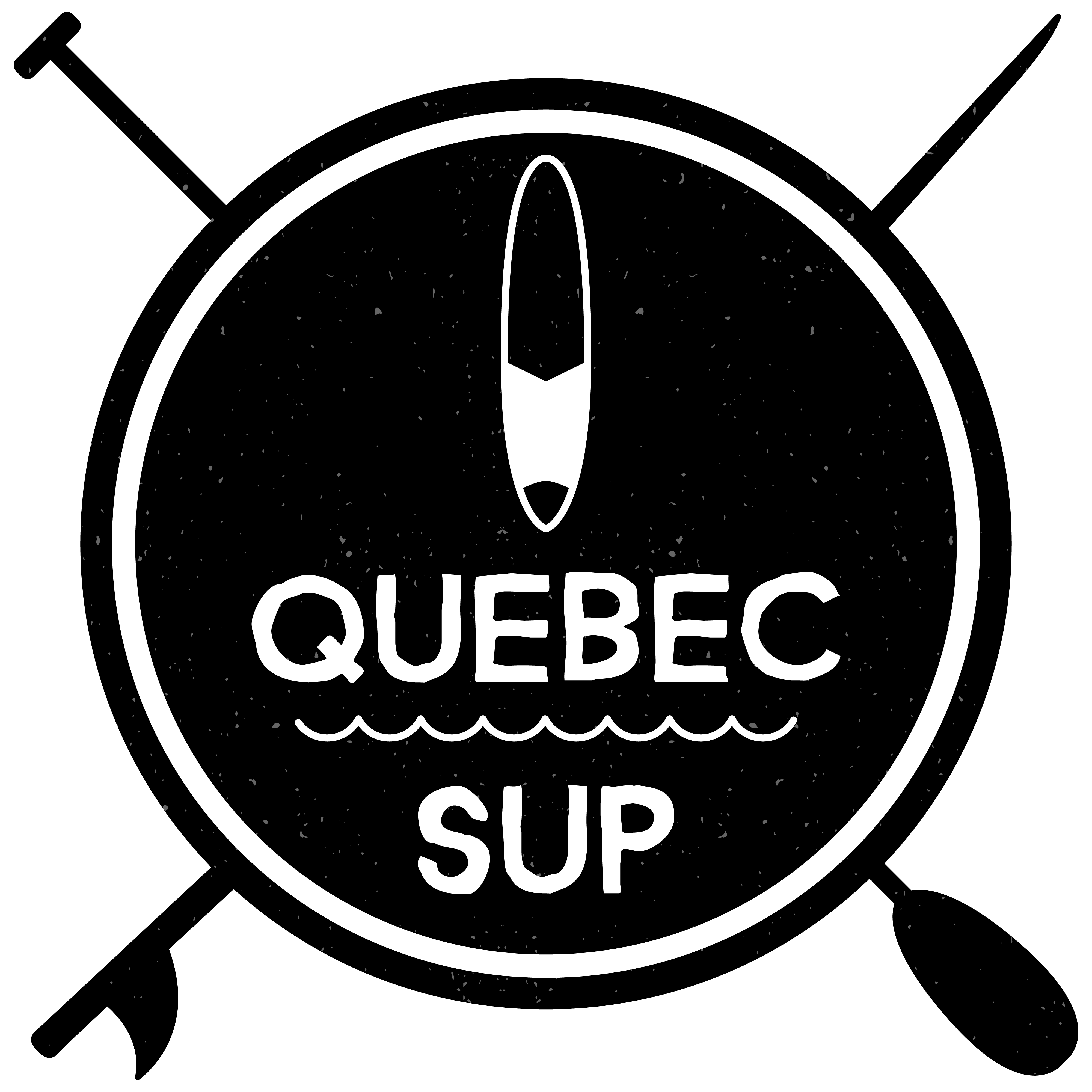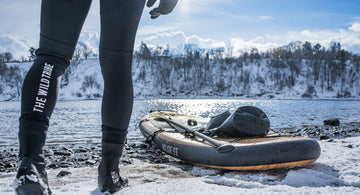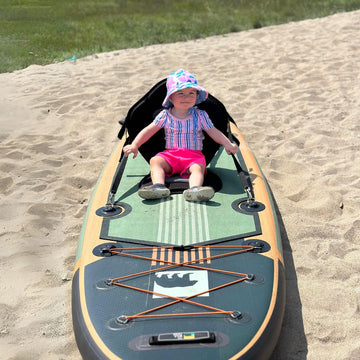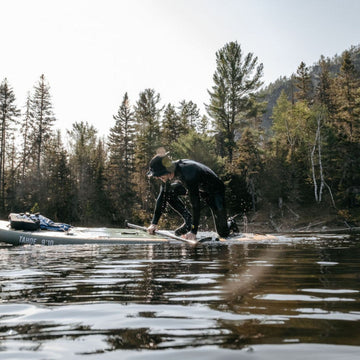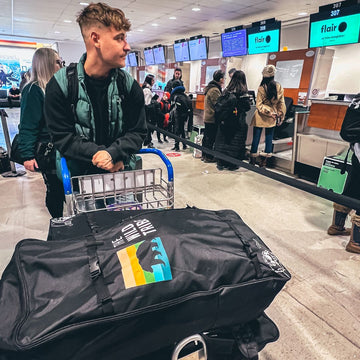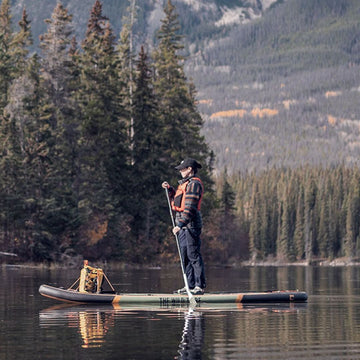Did you know that it is possible to have fun on the water even after the heat of summer?
It is possible to be comfortable despite the cold days that are becoming more and more numerous!
Imagine extraordinary landscapes; an autumn with its changing colors, magnificent snowy landscapes, and finally a serene nature with no one on the water!!
How to dress?
Choosing the right equipment according to the season is essential to extend your SUP season!
First, you'll need good boots to keep you warm. If the air is cool, the exposed skin on your feet and hands will cool down. It then becomes essential to cover yourself with shoes or water boots. Ideally we recommend a neoprene boot. It is the same textile that is used to make wetsuits. It is a material that is not 100% waterproof. Surprising, right? It is precisely this particularity that brings warmth to the snowboarder. The principle is simple, a small trickle of water slips between your skin and your wetsuit which regulates the temperature according to your body heat.
Then we strongly encourage you to wear a wetsuit! The wetsuit is especially recommended for safety reasons. Depending on the water temperature, the risk of falling into the water and of course the distance of your hike, the wetsuit will allow you to leave with a clear conscience.
As with a hike, we advise you to equip yourself with several layers before leaving. First, a moisture-wicking base layer, then additional layers for warmth and wind protection (veste, windbreaker, gloves, toques, etc.For your legs, running tights are a great choice. Much of the heat is lost through the head, so wearing a lightweight hat is a great idea. Avoid cotton materials and clothing, as well as anything that does not layer easily.
Remember that a wetsuit can get very hot, especially out of the water, but if you come to fall off your floor, you will greatly appreciate it!
Safety on the water
Although fall temperatures are often good and refreshing, be aware that water temperatures are getting lower and lower.
First, always equip yourself with a flotation vest. Cold water (less than 15°C) automatically puts your body into thermal shock. Once in this state, it becomes more difficult to make informed decisions, such as the simple action of getting back on your paddle board.
Also, always stay close to shore, don't paddle too far. Off-season sailing (fall, winter, spring) is not the best time to try to push your limits or try to break personal bests. It is also recommended to look at a weather report before going hiking.
It is too often thought that in flat water, an ankle strap is not necessary. Even the most experienced paddlers should use an ankle strap. href="https://quebecsup.com/collections/promotion">SUP every time they are on their board. Your board is the biggest flotation device you have on the water, and a strap will allow you to keep it attached to you, and within 3 meters of you in case something goes wrong.
Finally, don't forget that if you go for a walk alone, it is important to always notify someone of your outing and the location where you wish to sail, as well as a return time. When you practice this sport out of season, you may not meet many people on the water. Stay vigilant and safe when traveling.
Avoid ice
What does that mean ? Basically, you should avoid ice cream. Ice is heavy, sharp and unpredictable. It won't do you or your inflatable paddle board any favors. If you go on the water during the colder months, make sure to avoid sections of frozen water. Don't walk on ice to reach water and don't hike when large chunks of ice are floating around you.
Weather report
For an ideal paddleboard ride, look for a forecast with calm winds and precipitation-free skies. The weather in fall and winter can change quickly, so don't be tempted to try to beat the storm when it's cooler. Rain and snow can make visibility difficult when you're on the water. Because of this, it becomes easy to veer off course and for other people on the water not to see you.
During the cooler months, remember that the sun sets a lot earlier in the day and the temperature quickly cools before the sun has even set. Plans to be back on the water well before the sun is below the horizon. The local weather forecast should give you the time of sunset.
Little tips and tricks post-hike
Bring extra warm clothes that you can put on after your sessionSUP. It's a good idea to keep a towel, a warm sweater, pants and a jacket in your car so you have something warm and dry after a trip on the water. You can also bring a thermos with something warm to eat or drink after your paddleboarding session to help you stay warm and energized after spending time on the water. .
 < br>
< br>
